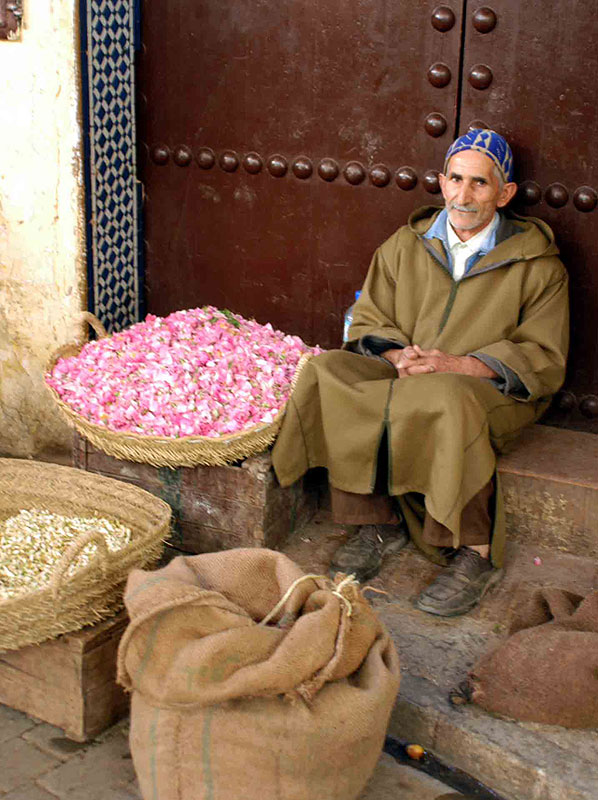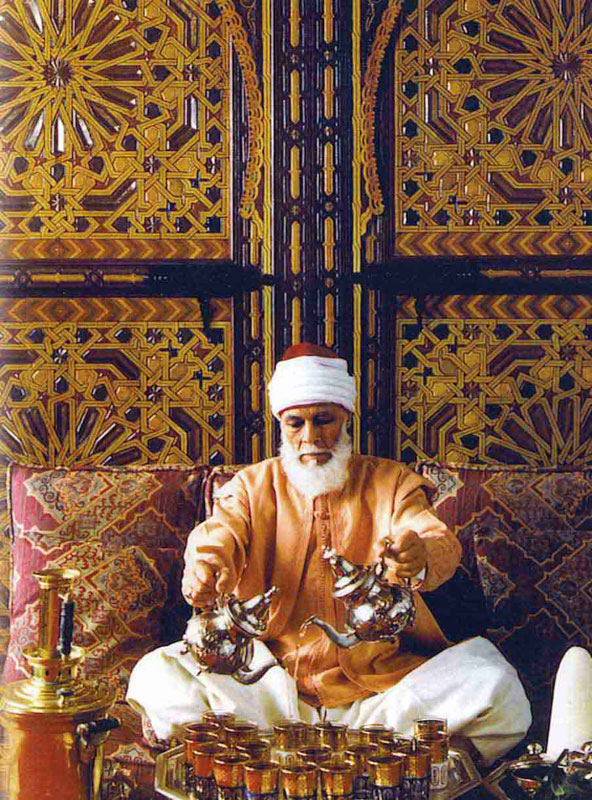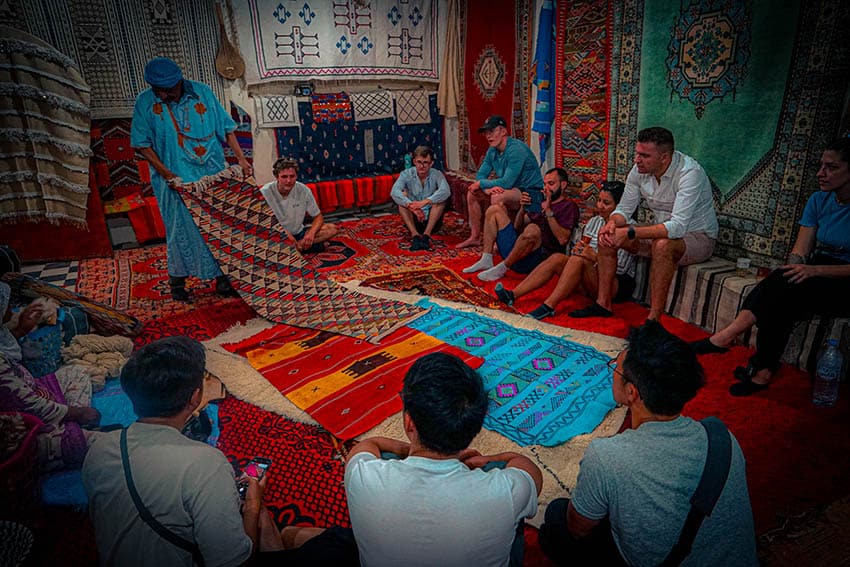
By Janis Turk
When middle-aged crazy first hit, I went alone to run with the bulls in Spain. Three years later, with hot flashes of wanderlust still surging in me, I found myself in Morocco running with gazelles.

Morocco is a magic country that for years existed for me mostly in my imagination — an ethereal territory tethered to sandy desert tents propped up under a sheltering sky, dreams huddled together like Bedouins around an oasis under a starry blanket, a place packed with possibility retaining secrets the way camels store water in their humps.
Sure, before I went there, it was all mixed up in my mind — magic carpets and kasbahs, the Sahara and the Arabian Nights — I sometimes confused my continents and doubted my deserts — but the effect was all the same: I was enthralled by the idea of Morocco.
I longed to stand on the shore where two sparkling seas commingle and kiss near Gibraltar at Tangiers. I wanted to stand on Bogart’s tarmac and experience the beginning of a beautiful friendship with Casablanca. I wanted to become invisible in Orwell’s Marrakech.
I desired brass teapots and bracelets from inside the walled Medina of ancient Féz. My dreams I cloaked in a coat of many colors, the secrets and stories of a Saharan mirage. At night I dreamed of running with gazelles.
In Morocco, there is an ancient African tale called “The Girl Who Lived with the Gazelles.” In many ways, it is quite like the biblical story of Joseph, who is sold by his brothers before one day becoming part of a royal household. In the end, he reveals himself to the ones who wronged him before being reunited with his father.
However, in this story, the character paralleling Joseph is a woman, and instead of being covered in a colorful coat, her naked body is cloaked by a herd of gazelles, which run with her, protect her, feed her and comfort her until she is one day found and becomes a queen.
Like Joseph, in the end, she avenges herself, rights the wrongs and, after disguising herself as a man, reveals her true self and is reunited with her father and a loving brother.

I had no one to avenge but myself. I had neither been sold into slavery nor had a brother ordered to kill me, like the hero and heroine of these tales. I had simply run away from a provincial life, a provincial age, a role of woman and wife and worker — if only for a few weeks.
If I were avenging anything, it was the way that, over the years, peddling it away piecemeal-like, I’d sold my own dreams. In becoming a woman, I’d abandoned a guileless girl and left her for dead in the desert. Memories of what I’d always wanted became murky, as though seen through a hot, close veil.
When I was a child I studied maps and knew the stories and poetry by heart. I loved Robert Louis Stevenson and tales of tigers devouring bad guys with their teeth. I knew about “Ali Baba and the Seven Thieves,” and cobras in baskets, magic lanterns and wishes. I knew I was a traveler. I knew I was good. I knew I was beautiful. I had forgotten all that now.
And so I went to Morocco.
The first time, I flew into Casablanca and took a bus to Tangiers. There I stayed in the old Hotel El Minzah in a neighborhood where Picasso, Degas, Gertrude Stein and Paul Bowles all had rambled about in their days.
I traveled to Tetouan, danced by the sea, touched camels, drank tea while sitting cross-legged on the floor with old men dressed in turbans and robes, passed time with painters, tasted the sweet lamb. I was filled with a sense that I’d always known this place.

During a time when the world was going crazy with fear of anything Muslim, I was wandering alone in the souk, blonde tresses tousled by breezes coming off the sea, untouched and unnoticed, uncovered, unbelievably blissful, beautiful — at peace. The country opened to me like a jack-in-the-box, popping up with surprises at every turn.
Have you ever known a time in your life, however brief, when you feel lucky? When, for once, you hit a streak where you simply wish for something good and it happens? You think of something, and it comes to life? In Tangiers, I felt that way.
“All good gifts around us …” I sang to myself as I climbed ancient steps, and touched mud and rubble walls. I was starting to remember how “happy” felt.
I ached for Tangiers when I left. I took the first flight out and stopped over in Casablanca. There I climbed a rickety staircase on the runway to board the plane. Looking back with confusion and grief, I felt like Ilsa Lazlo leaving Rick behind once more.
“We’ll always have Morocco,” I said to myself. I spoke as if I were already dividing in two, like cells in me were separating — preparing me to go back to being the person everyone owned back home, leaving behind the girl in the adventure. I couldn’t let this happen. I knew I must return.
A year later, I did. Soon I was landing once again in Casablanca. It was after midnight when I arrived. I greeted her lights with the happy tears of an old friend.

There was a delay, and I spent hours in the friendly Royal Air Maroc VIP lounge sipping coffee with diplomats before we boarded again and traveled through the pre-dawn sky to the city of Fes.
A fez is a traditional tall, round felt hat, but the city of Féz, founded in 808 AD, is a sparkling crown in northeast Morocco. There was confusion at the airport, and I hadn’t slept in 16 hours, but I was thrilled to be back in this strange and glorious place.
An Unimpressive Riad
My cab recklessly flew through narrow streets and slammed me around curves and came upon the ugliest parking lot I’ve seen since I lived in Mexico when I was in my twenties. On the roof of a white-washed ugly square, building was a blue flashing neon Internet sign. This Riad Yacout was nothing like Hotel El Minzah in Tangiers, I surmised. But no matter: At least there would be a bed.
A huge, square wooden door opened, and I stepped over a tall threshold, feeling as though I’d just crawled through a window in the dark. A black man in a creamy white gandoura kaftan led me up intricately painted blue tile steps that wound tall into the building.
Then we moved through an archway, and I beheld the most magical inner courtyard. It was just like in the tales of my youth. Three stories of arched balconies encircled a tile patio with a fountain.
Rose petals were scattered in the water. Candles lined every stony crevice. Plush pillows and hand-embroidered tablecloths covered every suitable surface. Riad Yacout was an oasis of sheer splendor in the night.
Page One | Page Two
- The Maldives: A Blue Beyond Blue - October 3, 2023
- Terceira Island in the Azores, a Magical Mystical Place - December 29, 2021
- Virgin Hotels Dallas: Sir Richard’s Flat - November 18, 2021



